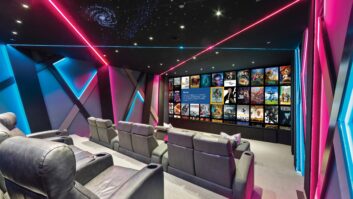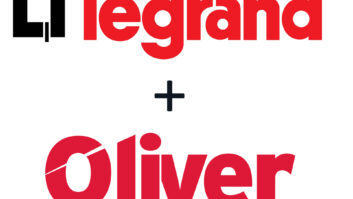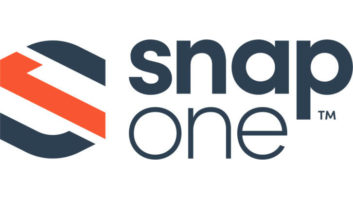The next round in the ongoing “video game console wars” began at the annual Electronic Entertainment Expo (E3), here, with Microsoft, Sony and Nintendo unveiling their next-generation systems.
Convergence and community are central in what Sony is calling the “Digital Decade” and Microsoft has deemed the arrival of the “HD Era.”
Microsoft will launch the first sortie when the new Xbox 360 is released for the 2005 holiday season simultaneously in North America, Europe and Japan. Designed to incorporate other entertainment appliances, the Xbox 360 will act as a hub for music, photos, real-time online connectivity and movie delivery from a Media Center PC.
After months of speculation it was also announced that the system will be backward-compatible with all original Xbox titles, while 25-40 new Xbox 360 titles will be available as launch titles — with about 160 titles currently in development. Likewise, Microsoft has reaffirmed that they will continue to support the original Xbox well into 2006.
The new Xbox 360, which debuted on a half-hour MTV special, features an IBM Power-PC processor and next-generation ATI graphics chip. No price has been announced, but the system is expected to be at retail by Thanksgiving.
The Wi-Fi-ready box will support both wired and wireless controllers, as well as a traditional Ethernet port. The 360 will feature a removable 20GB hard drive that can be upgraded for storage of saved games, music and other data.
All Xbox 360 games will be designed to support high-definition televisions with a native 16:9 widescreen aspect ratio, 720p and 1,080i resolution and 5.1 multichannel surround sound. Games will still be playable on standard televisions. Surprisingly, and contradicting numerous rumors, the Xbox 360 will not feature an HD-DVD or Blu-Ray disc drive, but rather double as a progressive-scan DVD player.
Users will be able, however, to rip MP3 files directly from CD to the unit’s hard drive. The unit will also be able to stream content from a Media Center PC, and Microsoft hinted at connectivity with other devices — including those of competitors such as the Apple iPod or Sony PSP. The multimedia functionality of the Xbox 360 can be accessed via the game controller or from an optional remote control.
Online connectivity and community is being touted as a key feature of the new console, and Xbox 360 will offer multitiered options of its Xbox Live component. The free Xbox Live Silver will offer access to the online community to chat with other members, download game demos and access other functions. An enhanced subscription mode, the Xbox Live Gold, will offer users the ability to play online games against other players.
Sony, meanwhile, won’t have its new console on the market until next spring, but the PlayStation3 will be a major step forward from the existing PS2 system, with an engine 35 times more powerful, Sony said. It will support up to seven wireless controllers and has outputs for two high-definition displays.
Built around the “Cell” Processor, the PS3 will be backward compatible with all PlayStation and PlayStation2 titles, and will feature support for Blu-Ray discs. The PS3 will further offer true 1,080p support with dual HD output for a panoramic view (32:9) option for display on two HD sets, as well as extended game-display options. The NVIDIA graphics processor is based on Sony’s next-generation architecture, with more power than two GeForce 6800 Ultras, with 2 million pixels or 2,000 by 1,000 resolution.
The PS3 will also feature four USB ports, a detachable 2.5-inch hard drive, HDMI output, Bluetooth connectivity, a gigabit Ethernet port, card slots for Memory Card, SD and CompactFlash, and Wi-Fi 802.11 b/g support. In addition to support for Blu-Ray discs, the drive will play SACD discs. The Wi-Fi connectivity with the PlayStation Portable will allow for Sony’s handheld system to act as remote controller and private screen.
The next level of evolution for Nintendo is the Revolution, its upcoming next-generation video game console. The release date has yet to be announced.
The Revolution will be the smallest traditional console developed by Nintendo, roughly the size of three stacked DVD cases. The unit will support the same 12cm optical discs of the current Nintendo GameCube, and Revolution will be fully backward-compatible with games for the existing system.
Likewise, Nintendo is designing the system with backward compatibility with all previous consoles that the Japanese manufacturer has released, including the Nintendo Entertainment System (NES), Super-NES and Nintendo 64 with download versions of classic titles. As a result, several thousand game titles will be available for the system when it likely arrives in stores next year.
The Revolution is being developed through a partnership with IBM and ATI and will feature an optional drive device to play standard DVD movies and will feature Wi-Fi capability built in. Unlike the Xbox 360 or PS3, Nintendo’s system will not utilize a hard disk drive but instead will feature 500MB of onboard flash memory with optional SD memory cards for saved games and file transfer options.













